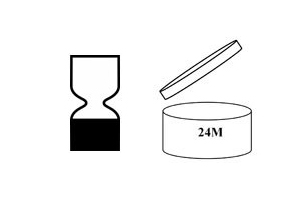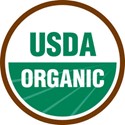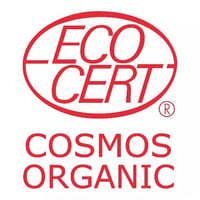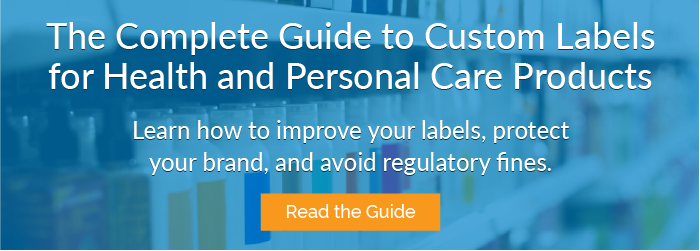
Have you ever looked closely at the label on a cosmetics product? We mean, really closely?
Once you get past the product description and all the lovely language and imagery meant to grab your attention, you’ll often see a string of symbols and abbreviations on cosmetics labels. What does it all mean?
The symbols, numbers, and codes on a cosmetics product label may seem like technical gibberish to the average consumer.
But to a cosmetics producer, these label elements are essential for complying with industry and legal regulations and for speaking to a growing, hyper-informed group of potential customers. Members of younger generations, especially, want to know about the ingredients they put in or on their bodies – not just to protect their health but also to preserve the environment, strengthen local communities, and safeguard the living creatures with which we share the planet. These conscientious shoppers look for specific markings on cosmetics brands as indicators that the brands share their values.
Whether you’re launching a new cosmetics line, redesigning your label, or evaluating your current label, you need to know what all these symbols mean and when to use them.
Here are some of the most common symbols and abbreviations you’ll find on a cosmetics product label:
‘Best Before End Of’ or ‘Period After Opening’
Surprisingly, the U.S. Food and Drug Administration does not mandate expiration dates for cosmetics labeling (unless the product is also classified as a drug, such as sunscreen). Nor does Health Canada. The European Union, on the other hand, does.
If you plan on marketing your product in Europe, you will need to indicate either the “best before end of” date (the last day your product will work as intended) or a “period after opening” timespan (how long after opening your product will continue to function).
These phrases may be abbreviated as BBE or PAO, followed by a date. You may also use an egg timer symbol for “best before end of” or the image of an open cream jar for “period after opening” (examples below).

E-Mark
The lowercase “e” you often see on cosmetics labels is another European Union standard. The “e” stands for “estimated,” and it tells you the average weight or volume of all similar products by that manufacturer.
In the United States, cosmetics manufacturers are required to make a declaration of quantity along the bottom of the main display panel, generally parallel to the base of the container.

Refer to Insert
Cosmetics are often quite small, leaving little real estate for brands to share crucial information.
The image of a finger paging through a book instructs buyers that they can get more information – such as ingredients, directions for use, or product warnings – within a leaflet, card, or extended content label packaged with the product.

Organic and Natural Product Markings
Various governmental and non-governmental organizations around the world have created programs to identify natural and organic products. The certifications are voluntary, but eco- and health-conscious consumers know to look for them.
The U.S. Department of Agriculture’s organic seal may be used on any product that contains at least 95% organic ingredients. (Note that the FDA does not define or regulate the term “organic.” USDA certification is only available to cosmetics products that contain agricultural ingredients.)

Many natural cosmetics brands choose to take part in the Ecocert program. Ecocert is a private international standard for cosmetics. Products that carry the Ecocert Organic label:
- Use organic plants for 95% of their plant-based ingredients.
- Contain at least 20% organic ingredients overall.

You may also notice cosmetics products marked with the Natural Products Association Certified seal. The NPA Natural Standard is a set of guidelines designed to establish whether a product can truly be called “natural.” The standards cover the sustainability and source of the ingredients (no petroleum allowed), product safety, animal testing, and the packaging's environmental impact.

The Cruelty-Free Bunnies
The image of a leaping bunny on a cosmetics label isn’t just a cute decoration. It’s the logo for a voluntary international standard that prohibits animal testing.

People for the Ethical Treatment of Animals (PETA) maintains its own cruelty-free certification program. PETA’s logos are also rabbit-themed.

Keep in mind that to qualify for either of these certifications, you must attest that not only does your company avoid animal testing, but your partners and vendors do, as well.
Other Considerations for Cosmetics Labels
We have presented a brief sampling of the symbols and logos you might choose or be required to use on your cosmetics labels. Other common label elements include recycling symbols and warnings about flammability and other hazards.
If your product qualifies as a drug, it may be subject to FDA regulations concerning pharmaceutical labeling. This includes a Drug Facts label that lists active ingredients, uses for the product, dosage instructions, and other important information. The FDA also requires all cosmetics brands to list their name and address clearly on the label.
Finally, cosmetics product labels are not just about regulations and certifications. The competition for attention at grocery stores, pharmacies, high-end cosmetic retailers, and e-commerce sites is fierce. A great label will immediately attract discerning cosmetics buyers, appealing to their self-image and beauty goals.
For label branding tips covering everything from your brand colors, to the shape of your label, to the latest design trends, read our comprehensive guide, “Custom Labels for Health and Personal Care Products.”

